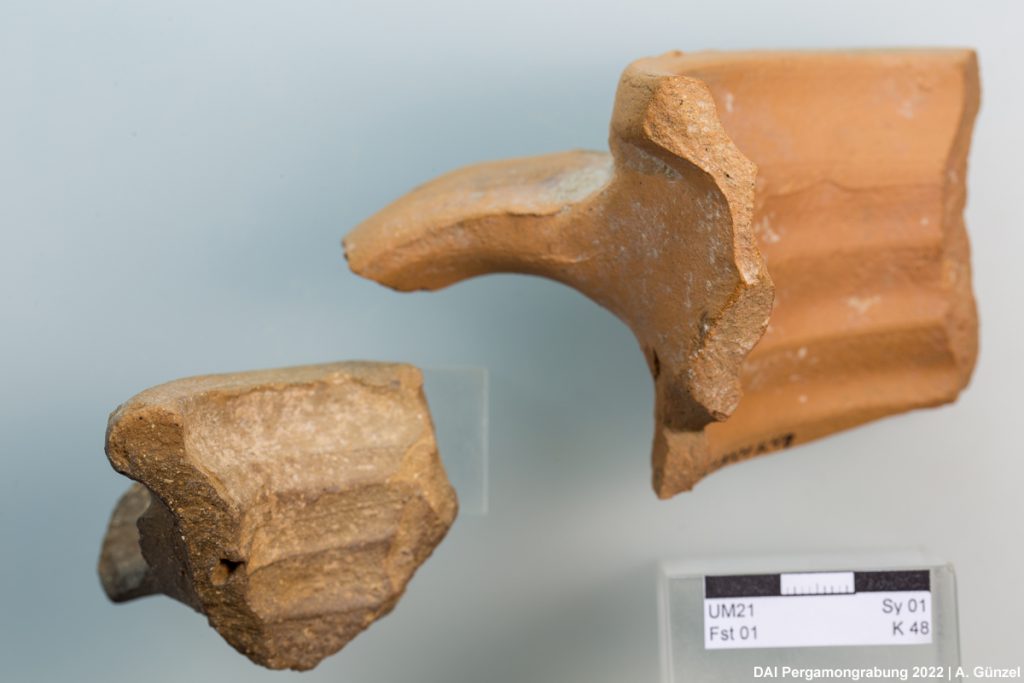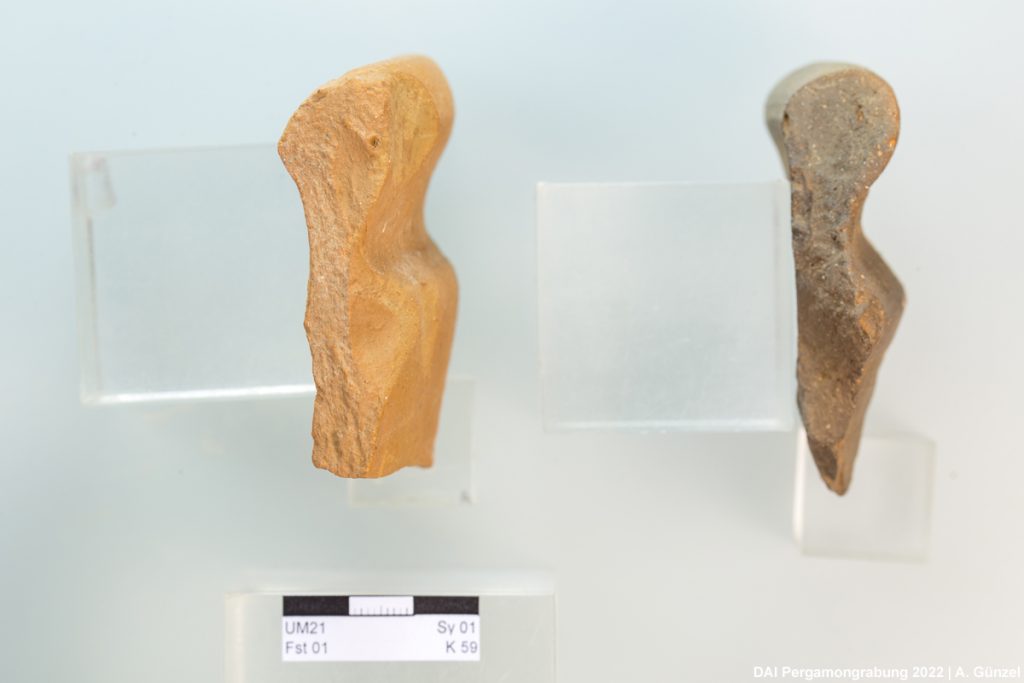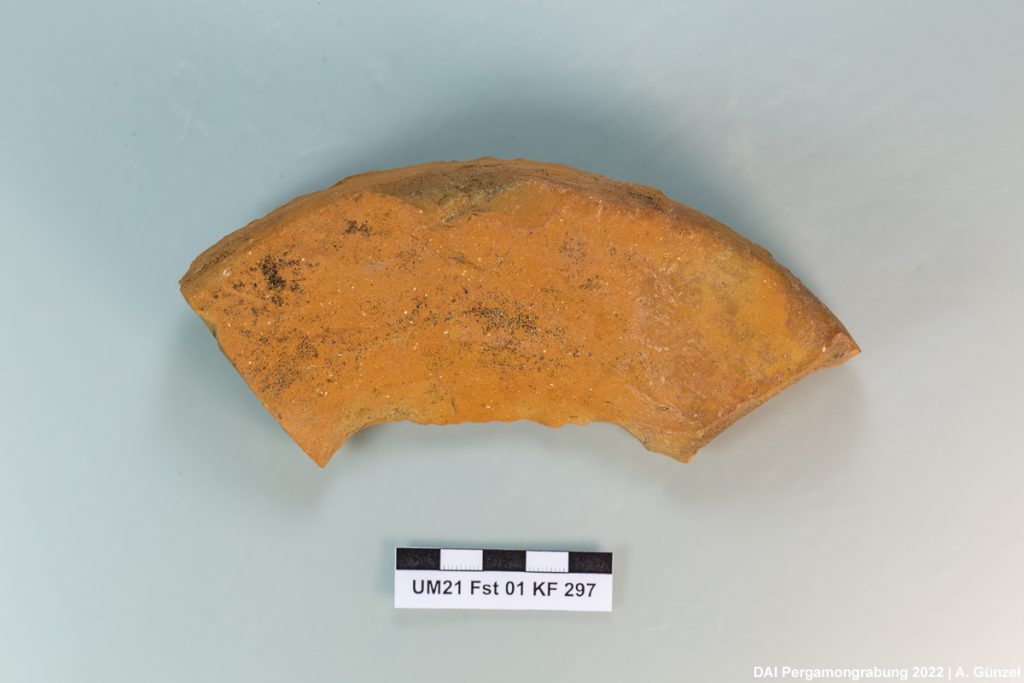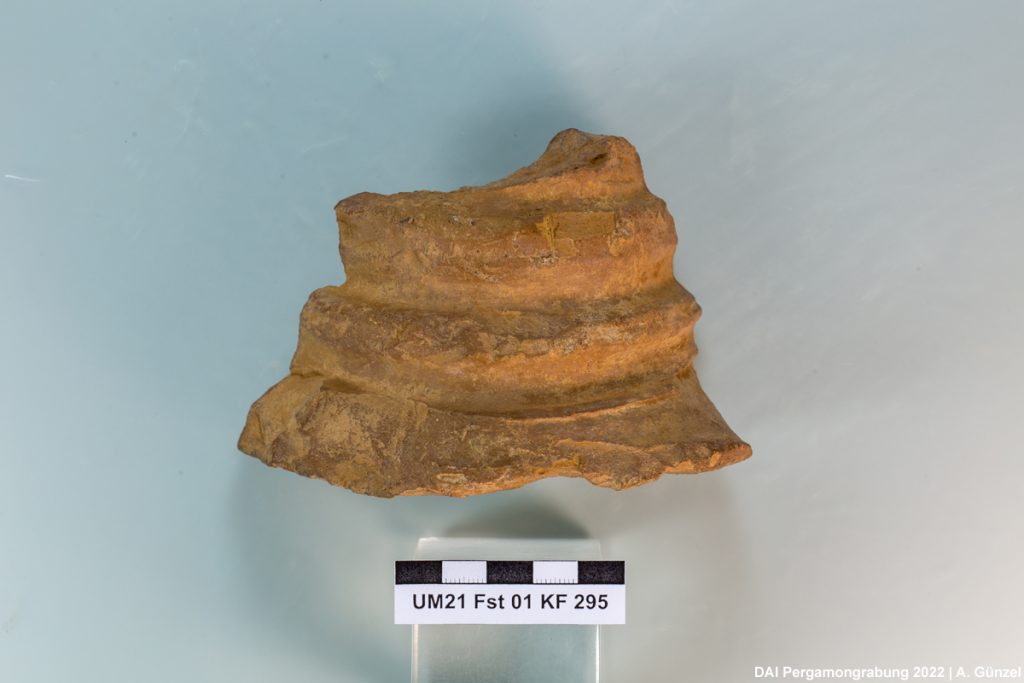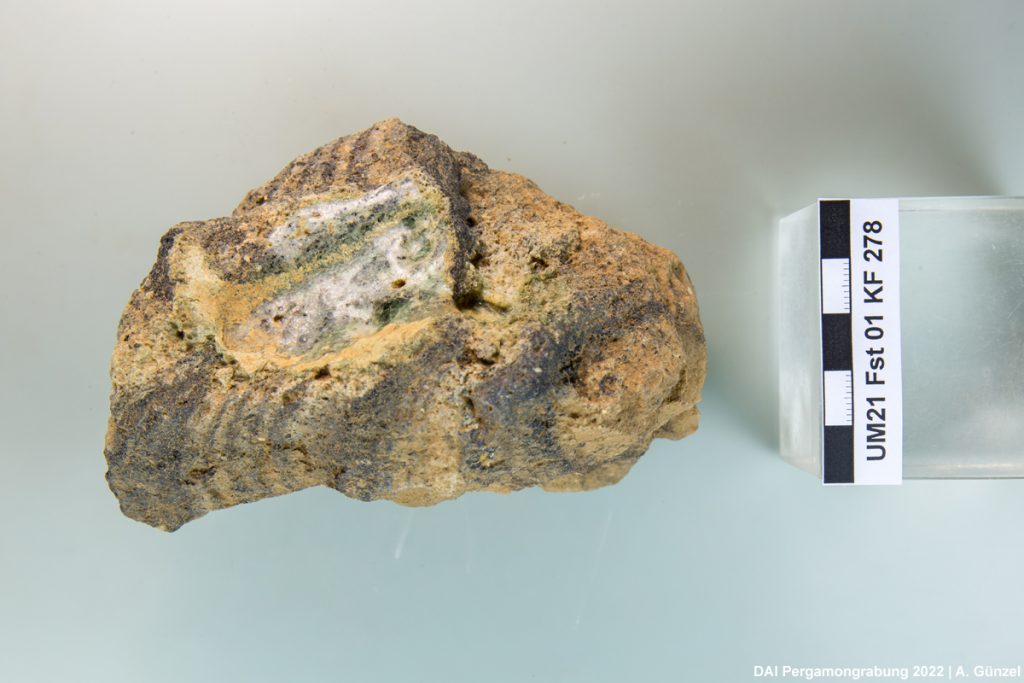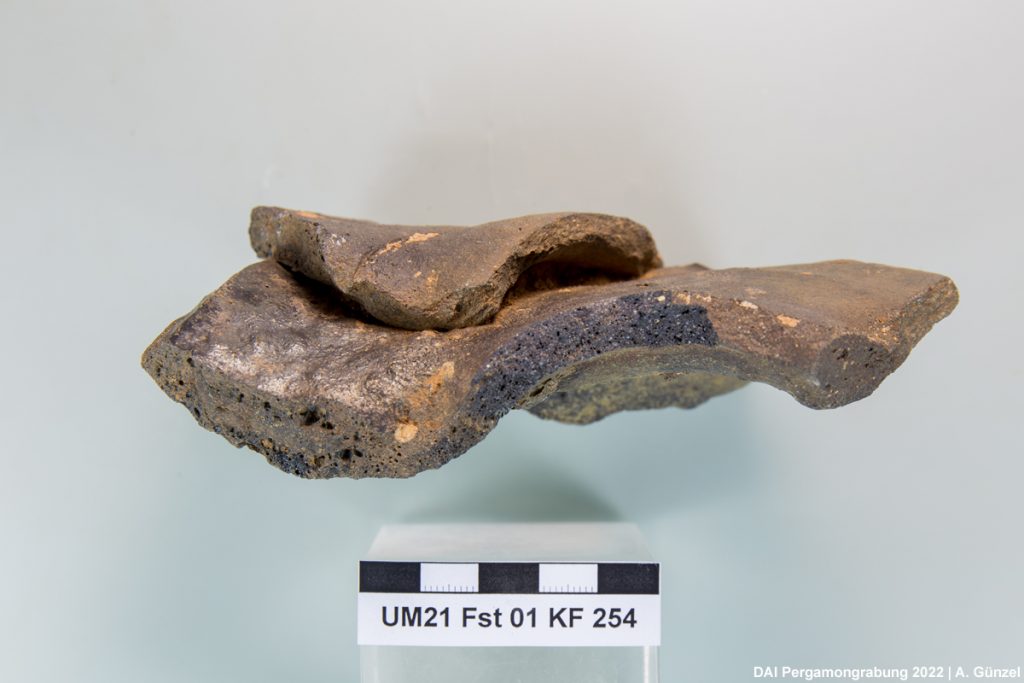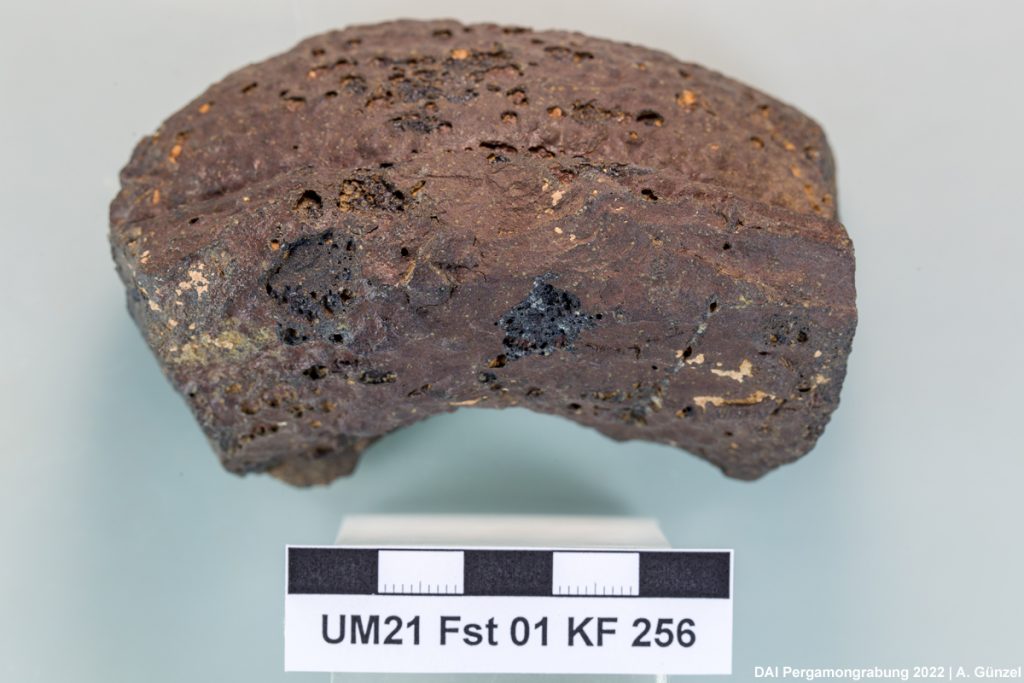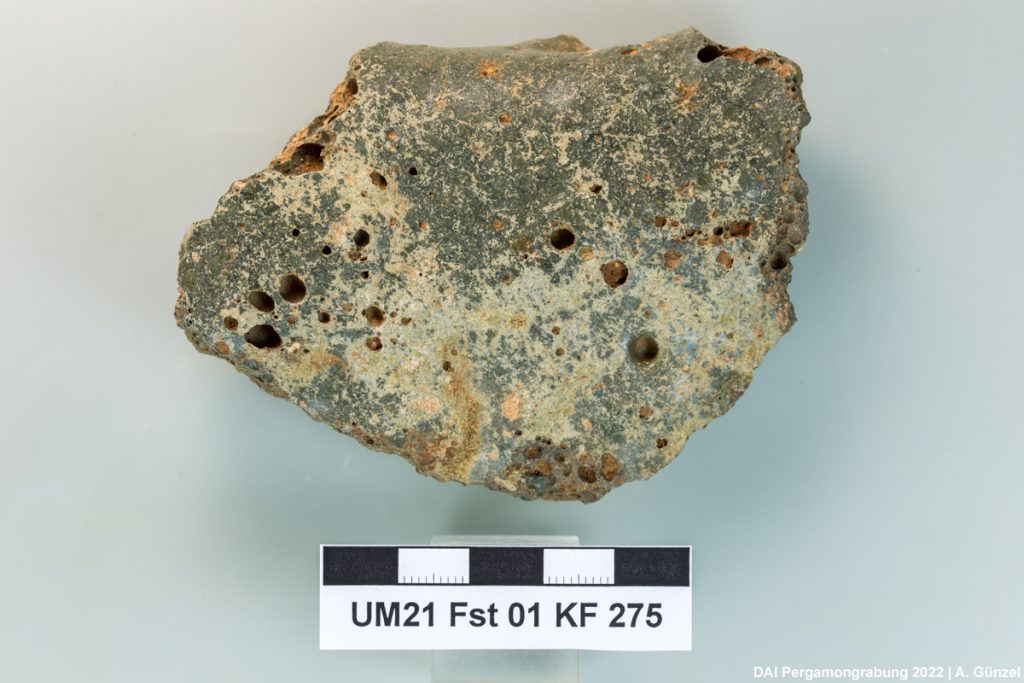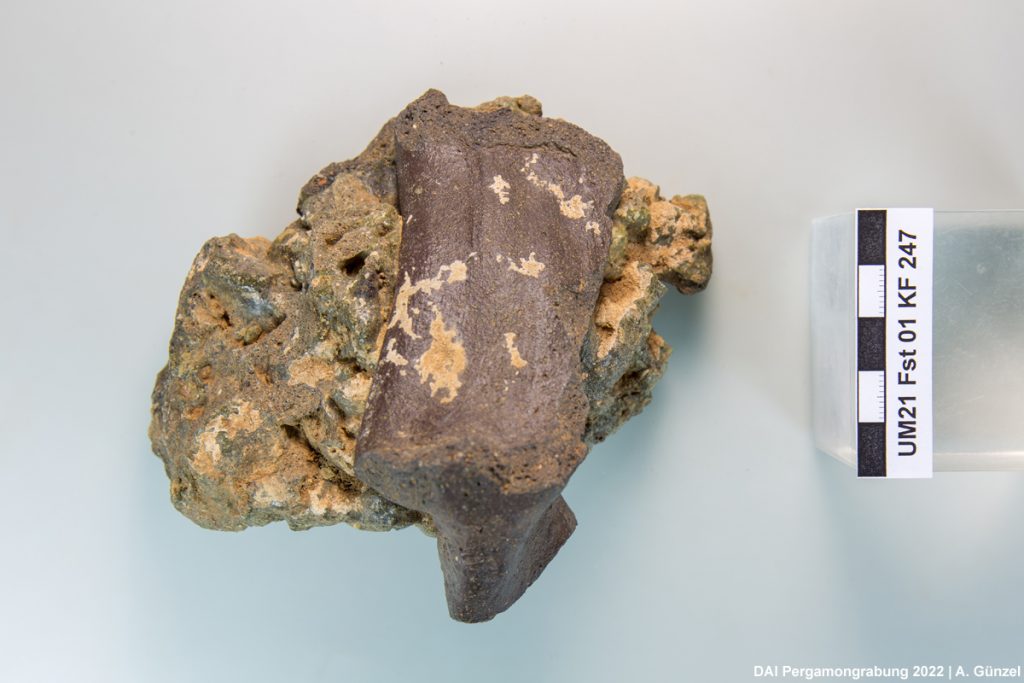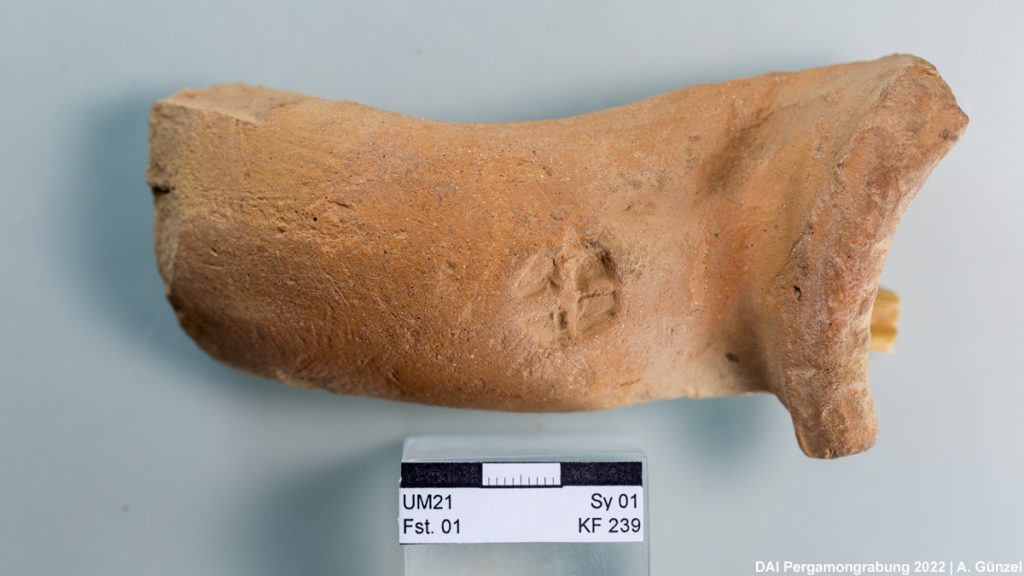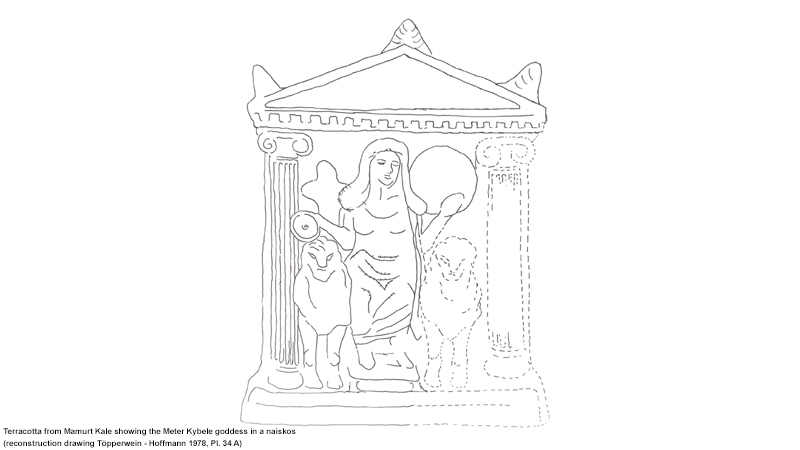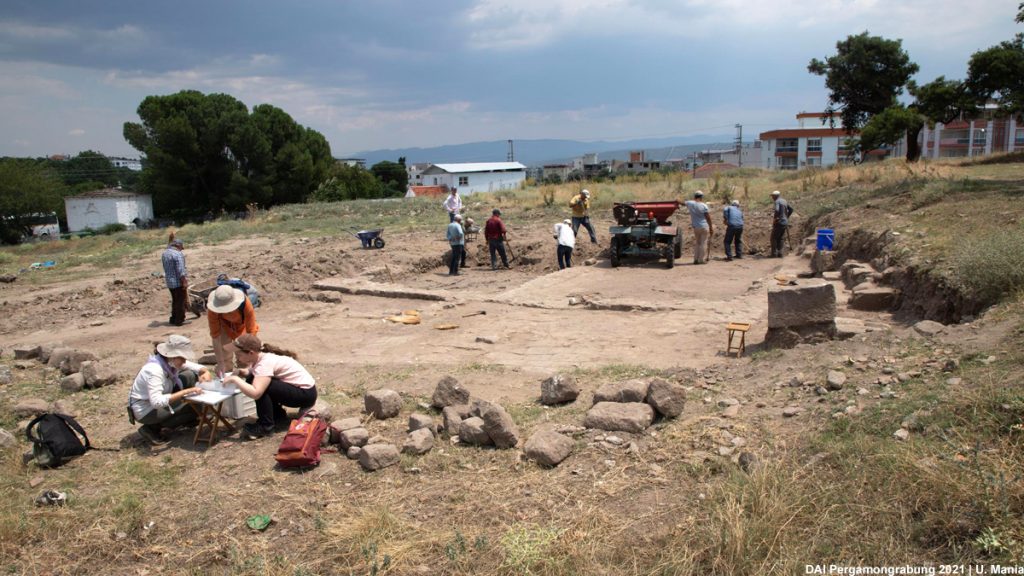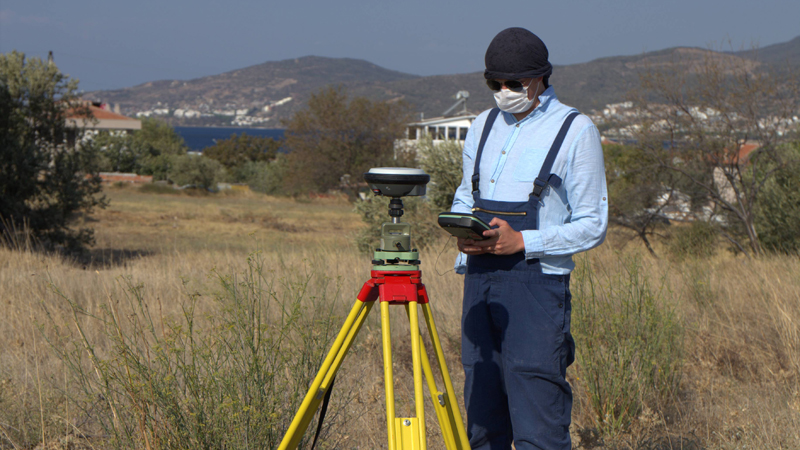Adriana Günzel, Güler Ateş, Philip Bes, Anneke Keweloh-Kaletta, Bernhard Ludwig
Ceramic products remain one of the most important tools for the chronological and functional classification of archaeological sites. Knowledge about resource exploitation, production techniques, extent of distribution, or use of ceramics provides fundamental insights into complex economic, ecological or social processes and developments in the past.
The discovery of a large amphora production site in the vicinity of Pergamon is therefore of great importance for the study of the ancient city, its micro-region and beyond. The site was recently discovered and investigated during fieldwork of the Archaeological Survey in Pergamon’s surroundings as part of the DFG-funded TransPergMicro project. Only a small part of the large amount of collected artefacts could be studied so far, and the evaluation of the documentation and geophysical prospections are still in progress as well. Still, some preliminary insights can already be offered:
The Site
The site named Sazlık (Turkish for reed or rush) is located in the western lower Bakırçay plain between Pergamon and the harbor towns of Elaia and Pitane (Çandarlı). On the fields where olive trees grow and crops are cultivated nowadays, a villa complex with marble architecture and decoration occupied the area presumably from the Roman Imperial Period to Late Antiquity. This villa complex included a production site for ceramic goods, mostly amphorae. At least 10 anomalies, most likely pottery kilns, could be located through geomagnetic prospection and this assumption is also facilitated by dense concentrations of manufacturing evidence documented on the surface. However, the full extent of the site could not be determined so far due to inaccessible fields. The contemporaneity and the functional unity of the production site and the villa complex are suggested by their location in relation to each other: based on the wind direction nowadays, the smoke and fumes of the kilns drifted in an opposite direction and did not reach the building, so that the residents were not bothered.
Material and Processing
When we surveyed the site for the first time the large amount and wide dispersal of well- and misfired pottery as well as production devices, slags and vessel wasters inform us that pottery was produced here at a large scale. After the fieldwork was finished the main task was to get an idea of the repertoire of the production site. To get an overview of the huge amount of material we decided to sort it in different groups: the biggest part was made up by the well- and misfired pottery. We classified these sherds by type to get a first idea of the repertoire of the production site. The matching of forms of the well- and the misfired pottery showed that mainly amphorae (Fig. 1) but also large unslipped bowls or basins (Fig. 2) and jars were produced here.
Regarding the fabric, the vessels were made of fine clay of red-brownish color with a lot of small and medium-sized white inclusions. On first sight and without closer examination the fabrics of the different sherds seem to be very homogenous. Despite the proximity these forms are neither known in Pergamon nor in its surroundings (for example at Pitane (Çandarlı)) up to now, although the intraregional distribution of Sazlık pottery deserves further research. Besides the diagnostic pieces, so rims, handles and bases of the vessels, the team members also collected body sherds which give insights in the process of forming the pottery. The sherds mark the point where the neck joins the body of the amphora which was formed separately on the turning wheel; then the neck was added. The last two steps were the forming of the rim and the adding of the handles. Furthermore, we also collected so called production devices which may give hints to the manufacturing process of the pottery. There were for example fragments of a circular shape made of clay which have holes in the middle (Fig. 3). The upper surface has the form of a cone, so that the hypothesis, that it was used to fix a vessel in an upright position, seems to be obvious. Some other tube-shaped objects have ridges on their exterior and at first glance look like amphora necks but are too narrow and too thick for that. A similar piece seems to be the part with which these objects stood on the ground because it widens downwards and was able to stand (Fig. 4) so that it can be possibly interpreted as a kind of stacking stand as well.
A stone with a shiny, glaze-like part of surface on one side (Fig. 5), onto which slag dripped down, was maybe part of a kiln. These thoughts about the usage of the items are still preliminary and we hope to get a better idea of the manufacturing process with a closer examination in this year’s campaign. A last large group of finds consists of production waste, e. g. objects formed by several pieces of pottery fused together in the kiln (Fig. 6), extremely misfired pottery (Fig. 7), slags (Fig. 8) and slagged, overfired pottery (Fig. 9).
Furthermore, the dating of the production site is of interest. For this question especially the “well-known“ pottery we already know from Pergamon and its surroundings could give hints. The dating of the production site to the Roman Imperial Period or Late Antiquity thus seems most likely. This is also supported by the stamps on some of the amphora handles (Fig. 10), the closest comparisons for which can be found in Smyrna. Moreover, certain typological features (Fig. 1) hint that the amphorae that were made at the Sazlık site might belong to the family of so-called Globular Amphorae. A dating in Late Antique to Early Byzantine times therefore is our current working hypothesis.
Potential and Outlook
Even if we do not yet have an exact picture of the Sazlık site – regarding its period of occupation for example – it is however an important and exciting addition to the handful of sites in the Pergamon Micro-Region where pottery was manufactured during the Hellenistic to Late Antique periods. Since the Sazlık site appears to have mainly focused on the manufacture of amphorae, this naturally raises the question with what agricultural produce these were filled. Part of that produce presumably was consumed or used by the occupants of the villa complex, but given the wide spread of the manufacturing evidence and the presence of more than 10 anomalies that are likely pottery kilns, the scenario that surpluses were produced is not only an attractive but also a plausible one. To test this hypothesis we will need to see if and in that case where fragments of Sazlık amphorae are present elsewhere in the Pergamon region (and possibly beyond), with archaeometrical analyses helping to confirm such identifications. Furthermore, the location, chronology and function of such potential consumption sites will also help weave together an image of the artisanal and agro-economic regime in the Pergamon Micro-Region.

